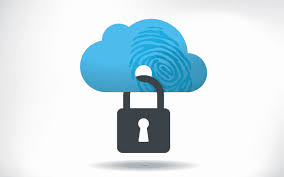According to a survey by the Cloud Security Alliance, the misconfiguration of cloud resources is the leading reason for data breaches, and a threat to security. The primary reason for this risk can be attributed to managing identities and their privileges in the cloud.
As organizations expand their cloud footprint, assigning and managing permissions at scale becomes a complex problem. Besides, it extends beyond the realm of human user identities to devices, applications, and services adding more complexity.
As a result, users and applications tend to accumulate permissions more than necessary, creating a huge permissions gap. This is where a cloud security platform can pitch in and enforce the principles of least privileges to address the gap and mitigate the risk.
What is the Principle of Least Privileges?
In an ideal world, users or applications should be limited to the exact permissions required for their role or job. However, this is seldom the case. The principle of least privileges involves limiting access rights for users or identities to the bare minimum permissions that they need to undertake their work.
These permissions can be characterized according to their department or can be role-based by restricting access rights for applications, systems, processes, and devices to only those permissions required to perform authorized activities.
At the outset, it might seem like an easy job to implement this principle. All you need to do is maintain the users’ database along with the inventory of permissions.
In theory, you have to compare the two databases and determine where to retain, modify, and remove permissions. Also, examine the environment to update the permissions continually.
However, in practice, the effort and time required to determine the precise permissions necessary for each application in a complex cloud environment could be cumbersome. It might not be as straightforward to implement this principle and reap its benefits.
Cloud Security Platform to Maintain and Automate Least Privilege Configurations
Implementing and maintaining the state of least privilege is key to security in the Cloud environment. When we see identities with greater than required permissions, it can lead to harmful consequences and risks. Here’s how an integrated cloud security platform can help to manage the Principle of Least Privileges in your cloud:
- Mapping Identities with Permissions – What are several roles, identities in your cloud environment, and what level of permissions do they require? You no longer have to maintain a manual database of the same. Most cloud security platforms provide a graphical map of all your identities to determine their effective permissions and continually monitor the database across the cloud. For instance, dormant identities characterized by lack of login activity can be quickly flagged and removed.
- Separation of Duties – It is vital to separate admin accounts from standard accounts and higher-level functions from lower ones and devise identities so that there are no conflicting responsibilities. Moreover, individual actions should be traceable so that it can be duly audited and examined for the detection of control failures. An effective cloud security platform can visually portray where separation is not in place and show how the failures occurred. For instance, the NSA has employed the principle of least privilege to revoke higher-level powers from 90% of its employees since the Snowden leaks.
- Activity Monitoring – In a modern cloud environment, numerous identities are active at any point in time. This makes real-time monitoring a herculean task. This is where an automated security platform can continuously monitor identities across all your cloud. In case of security breaches or anomalous activity, automated resolution can be applied, or alerts are sent out to the right team to take any action quickly.
- Toxic Combinations – A new user is typically allocated with minimal privileges as they get started. However, over time new privileges are added on as the user takes more responsibility, which can even lead to unwarranted privileges that may not be necessary. As a result, it can create a web of privileges when used in specific combinations to grant the user a higher level of authority than what is needed. These toxic patterns may not be visible to the naked eye. A cloud security platform continuously monitors for any toxic combinations and brings it to the forefront.
Implementing the principle of least privilege has several benefits, including better security/stability, minimize attack surface, limited malware propagation, and improved audit readiness.
A cloud security platform makes your job easier by limiting the privileges of non-human and human identities to what is needed. Put the principle of least privilege to practice in real-time and automate the monitoring, assessment, and optimization of access permissions across all identities to eliminate risk.
